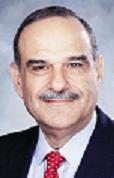Help Desk Solutions …
Help desk solutions run the range from free to several thousands of dollars for a custom program.
Two very workable and reasonably priced solutions are Kayako.com and Perldesk.com.
(You can also do a search in Google for "free help desk software" if you don't want to spend any money.)
Both offer the choice of installing the software on your own server, or paying a monthly fee to get a copy of the software installed and maintained on the provider's server.
Which option you choose depends on your level of technical ability, level of customization needed, and how much support you'll need over time.
I suggest starting out with the hosted version until you get the hang of the system, then switch over to a version on your own server to avoid the monthly charges.
An online help desk operates fairly simply.
A customer submits a ticket through a form on your website, the customer support staff (even if it's a staff of one) responds to the ticket through the website, and all communication gets posted on a private web page.
Both Kayako and Perldesk enable customers to search a "knowledgebase" or collection of articles to try solving their problems on their own (especially during non-business hours), thus frequently eliminating the need to get a live response.
Anyone who does business online should consider installing a help desk solution from the start rather than putting it off until the future.
Get your customers conditioned to operating with a ticket system rather than switching on them in mid-stream once your business gets too busy to handle support via email.
Here are a couple of other tips to help you.
Designate one person to act as the "sorter" answering the basic issues, then referring off the ones they can't answer to other staff members.
Also, post your help desk hours and stick to them.
Answer questions the same day if possible, but no later than the next business day.
--
Jim Edwards is a syndicated newspaper columnist and the creator of an amazing course that will teach you step-by-step and click-by-click how to finally create your own money-making mini-sites...




